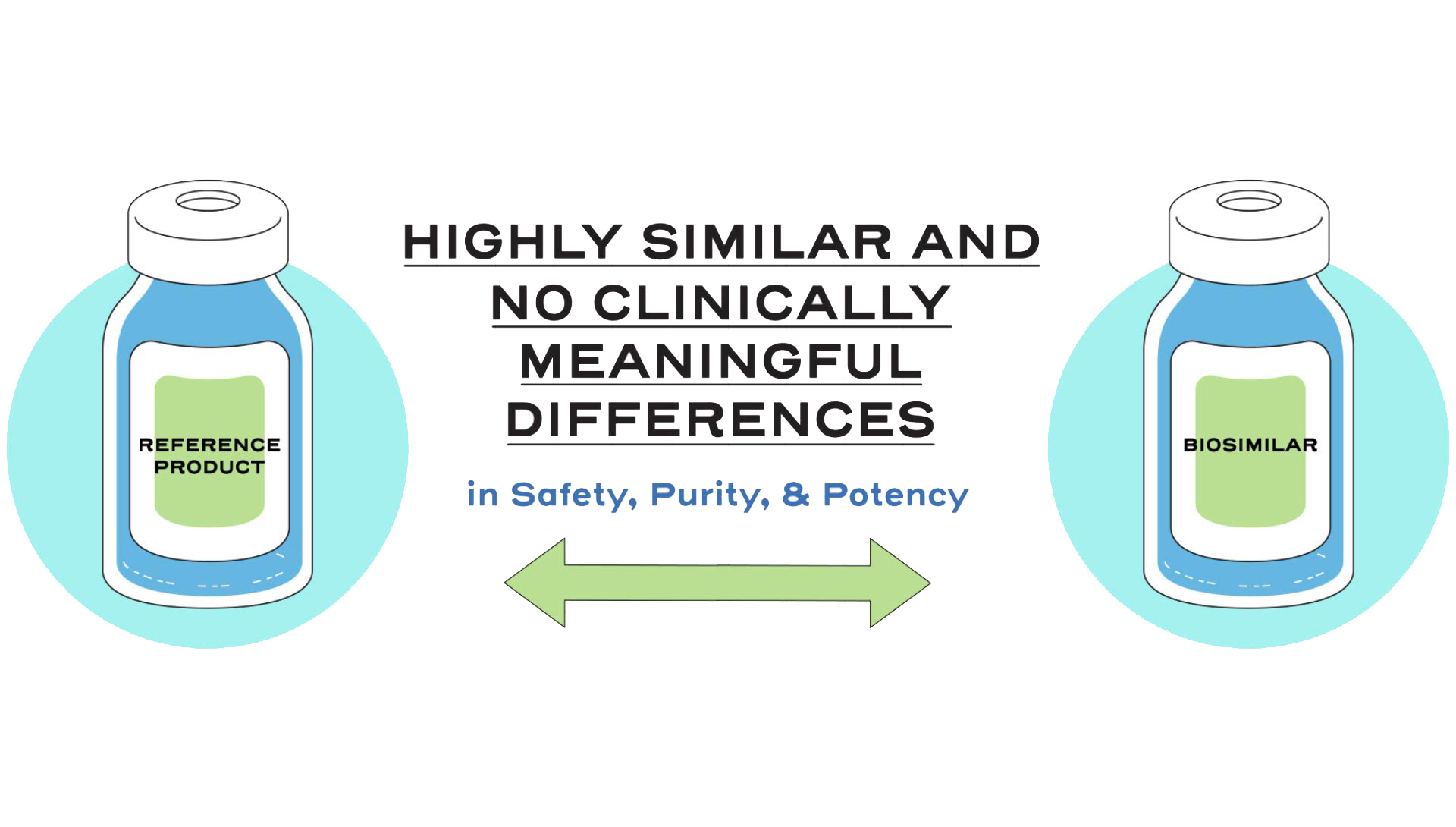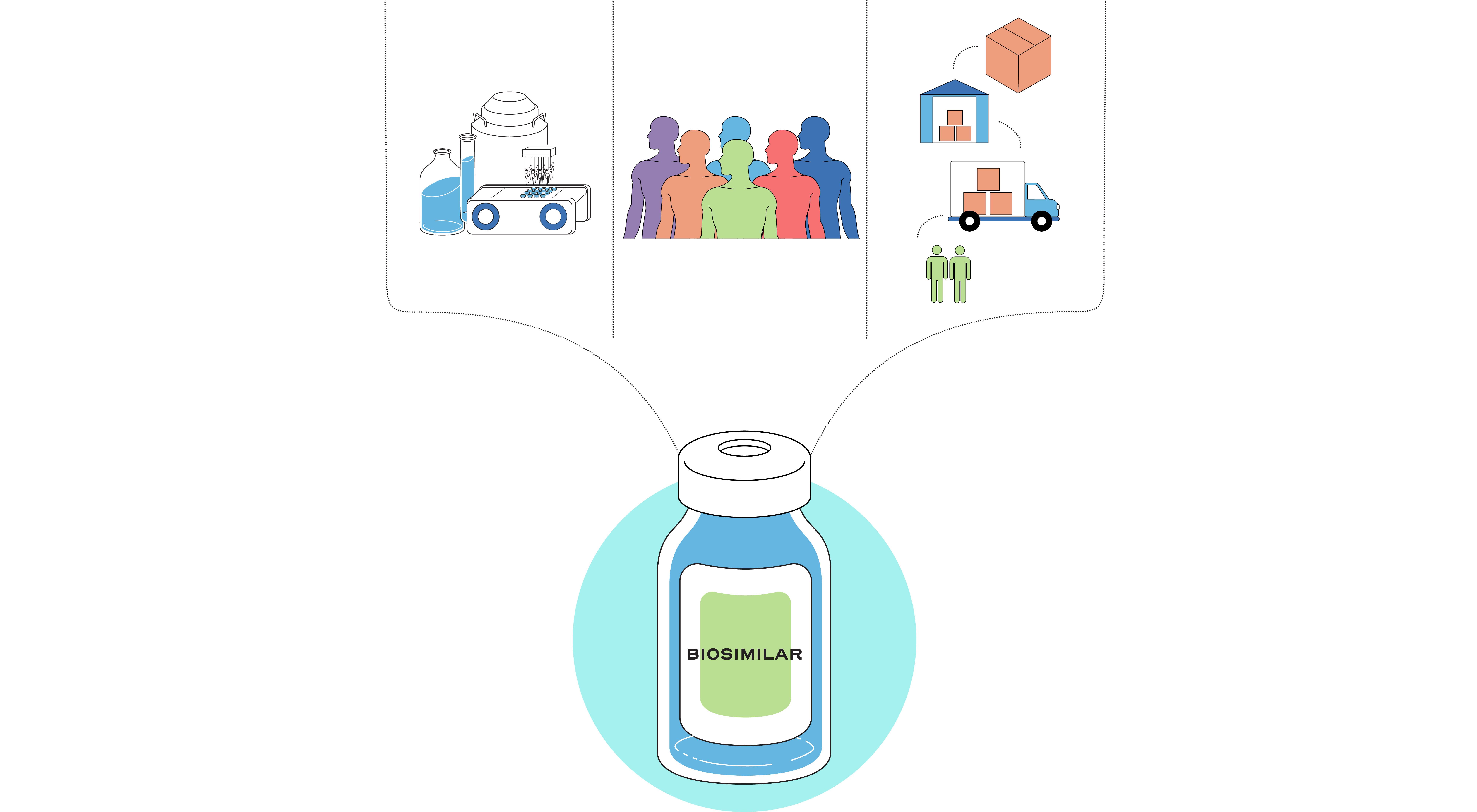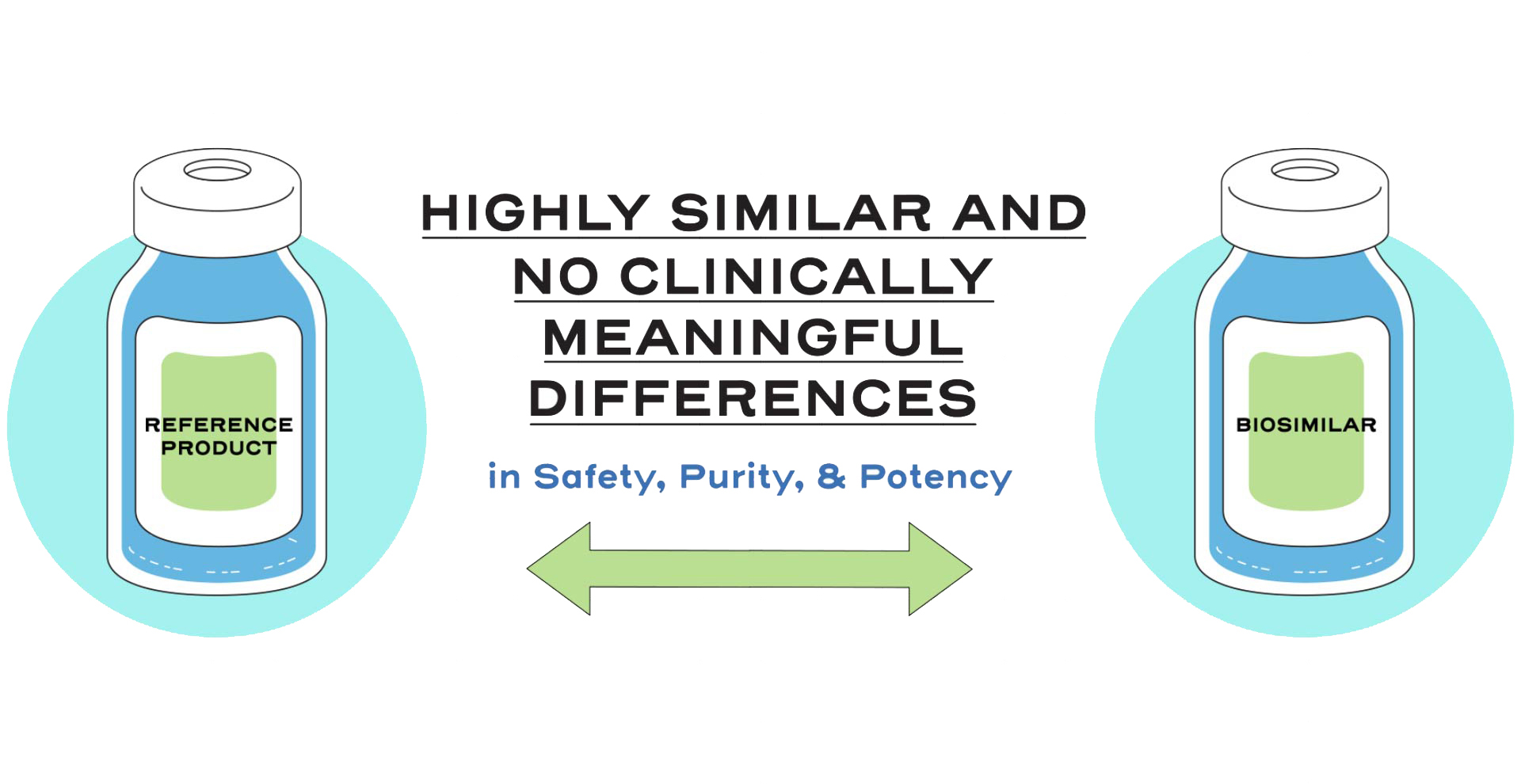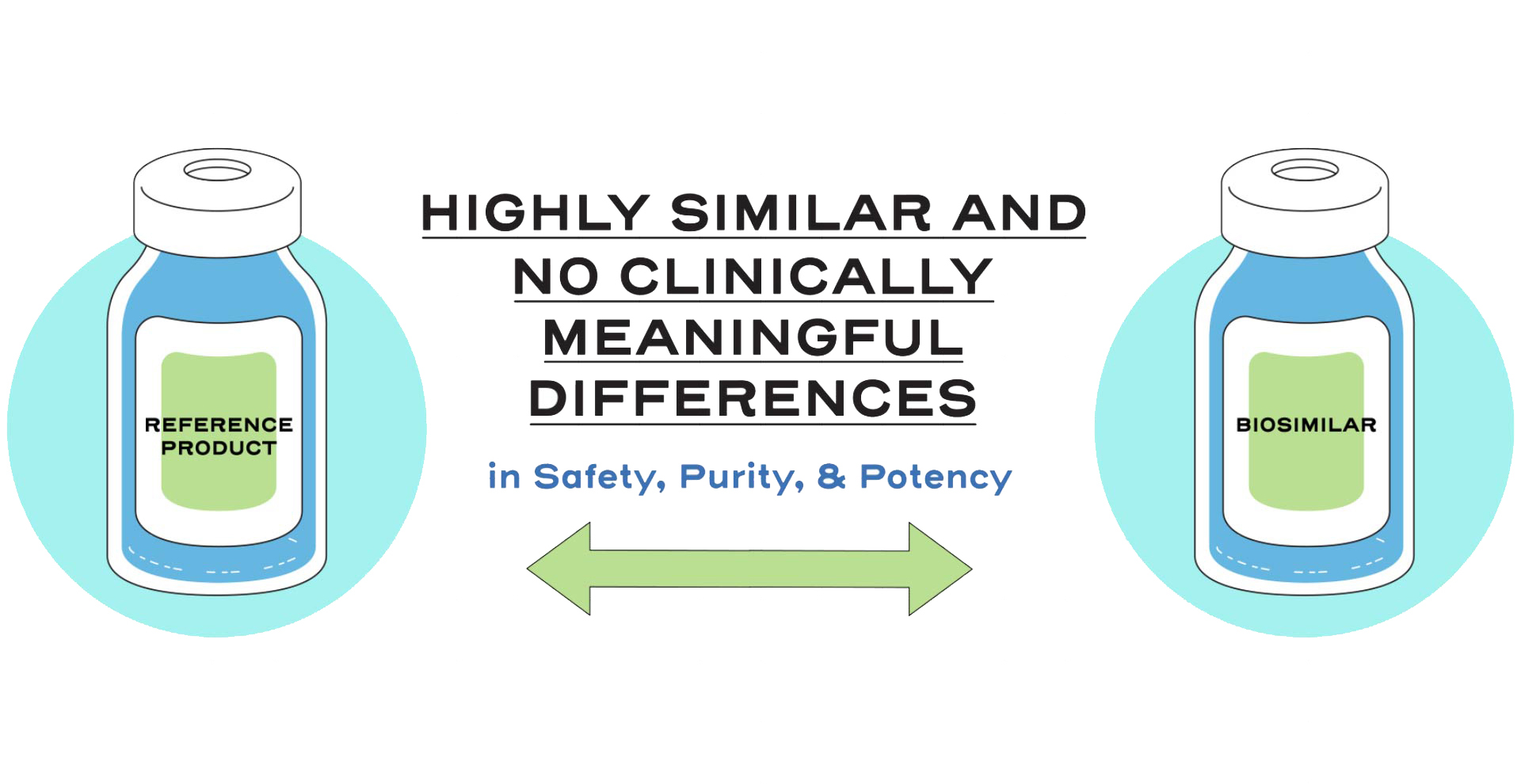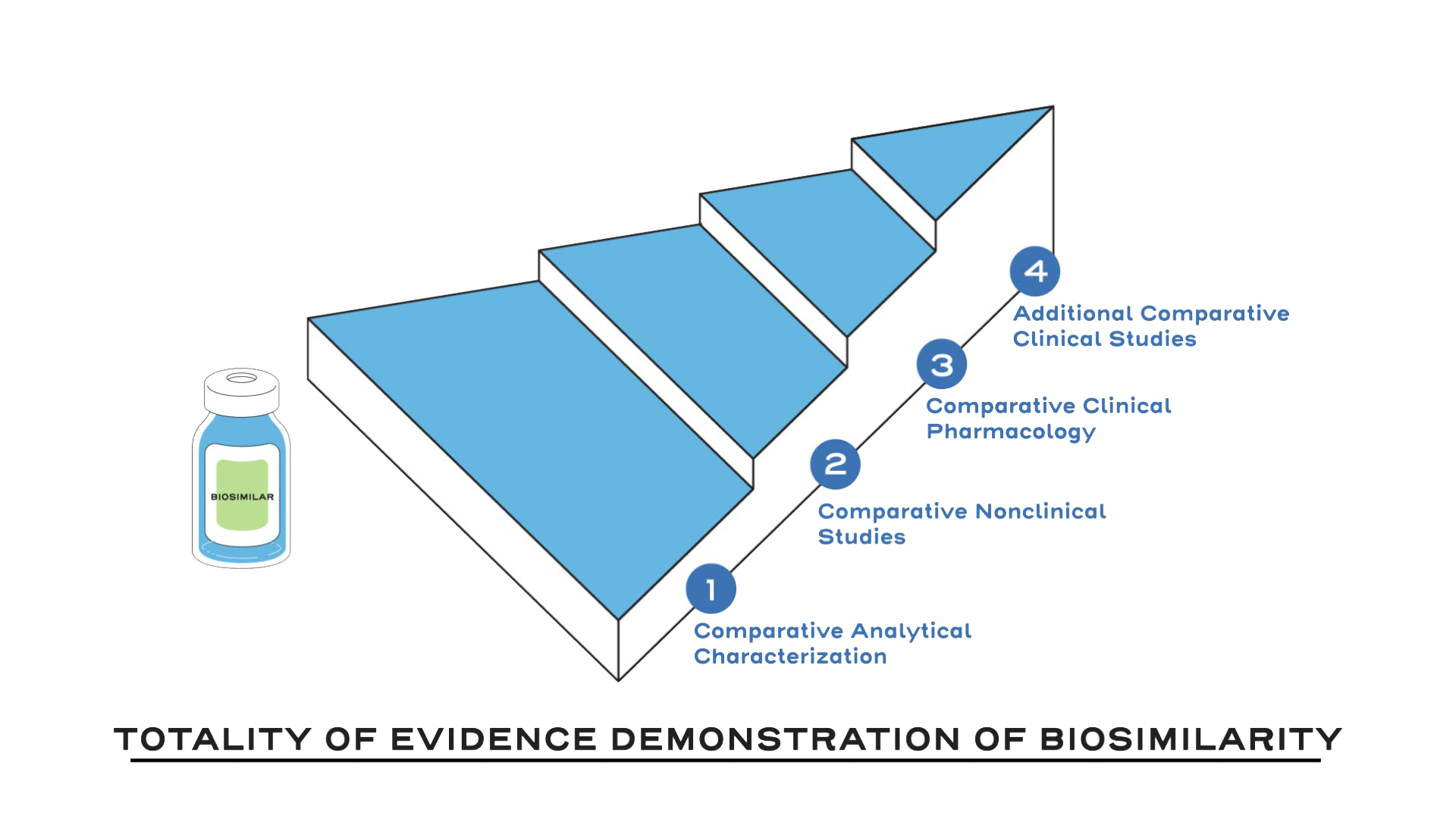
Fast Facts About the Regulatory Approval Pathway for Biosimilars
Fast Facts About the Regulatory Approval Pathway for Biosimilars
In jurisdictions with robust regulatory standards, such as the US, the approval pathways for biosimilars, while distinct from the pathway for originator biologics, are rigorous and scientifically appropriate.1
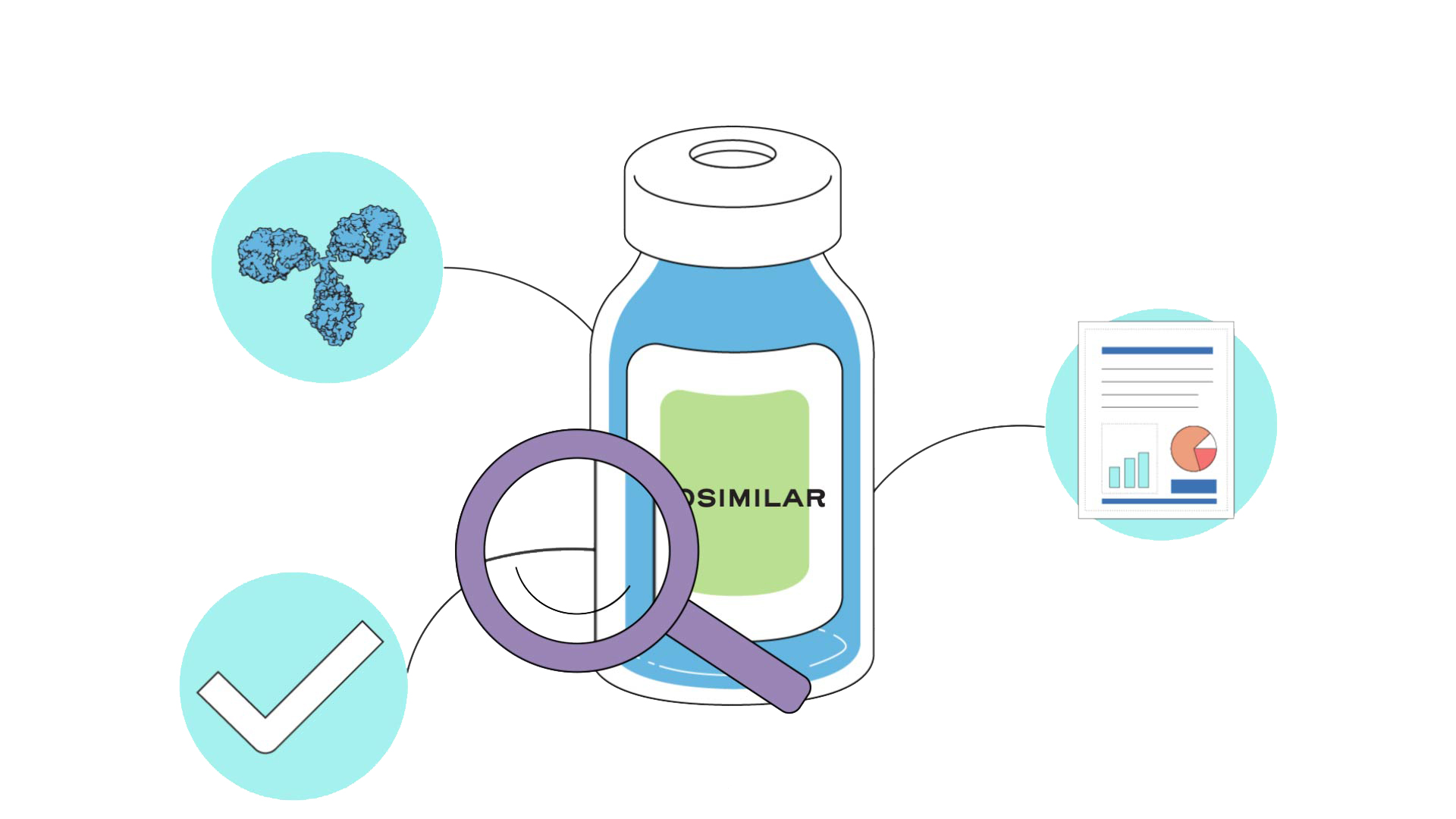
Approval of a biosimilar is based on the totality of evidence generated using a stepwise approach to demonstrate biosimilarity.2
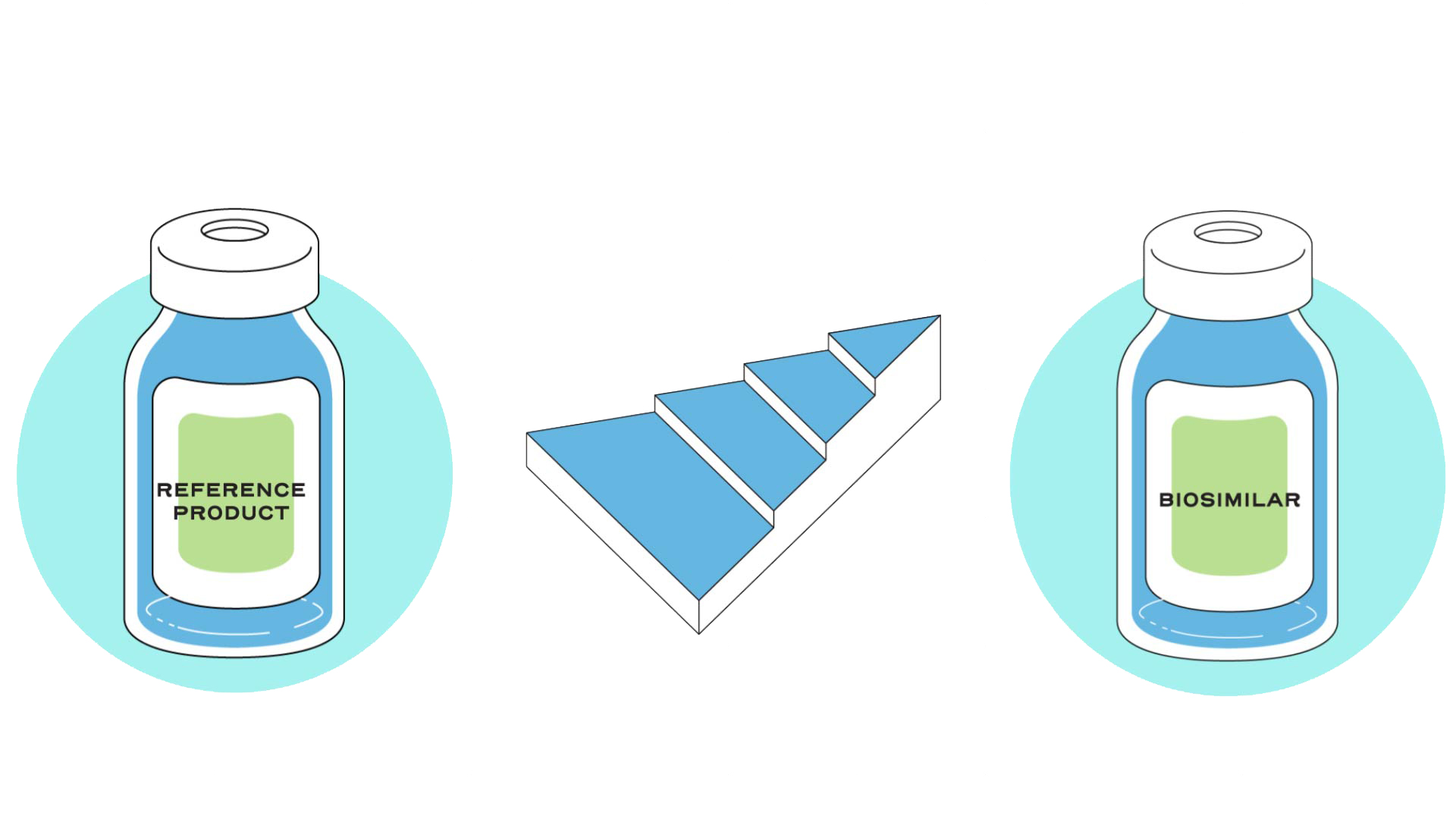
Extensive analytical characterization, including comparison of both structural and functional components of the biosimilar and the reference product, establishes the foundation for a biosimilar development program.2
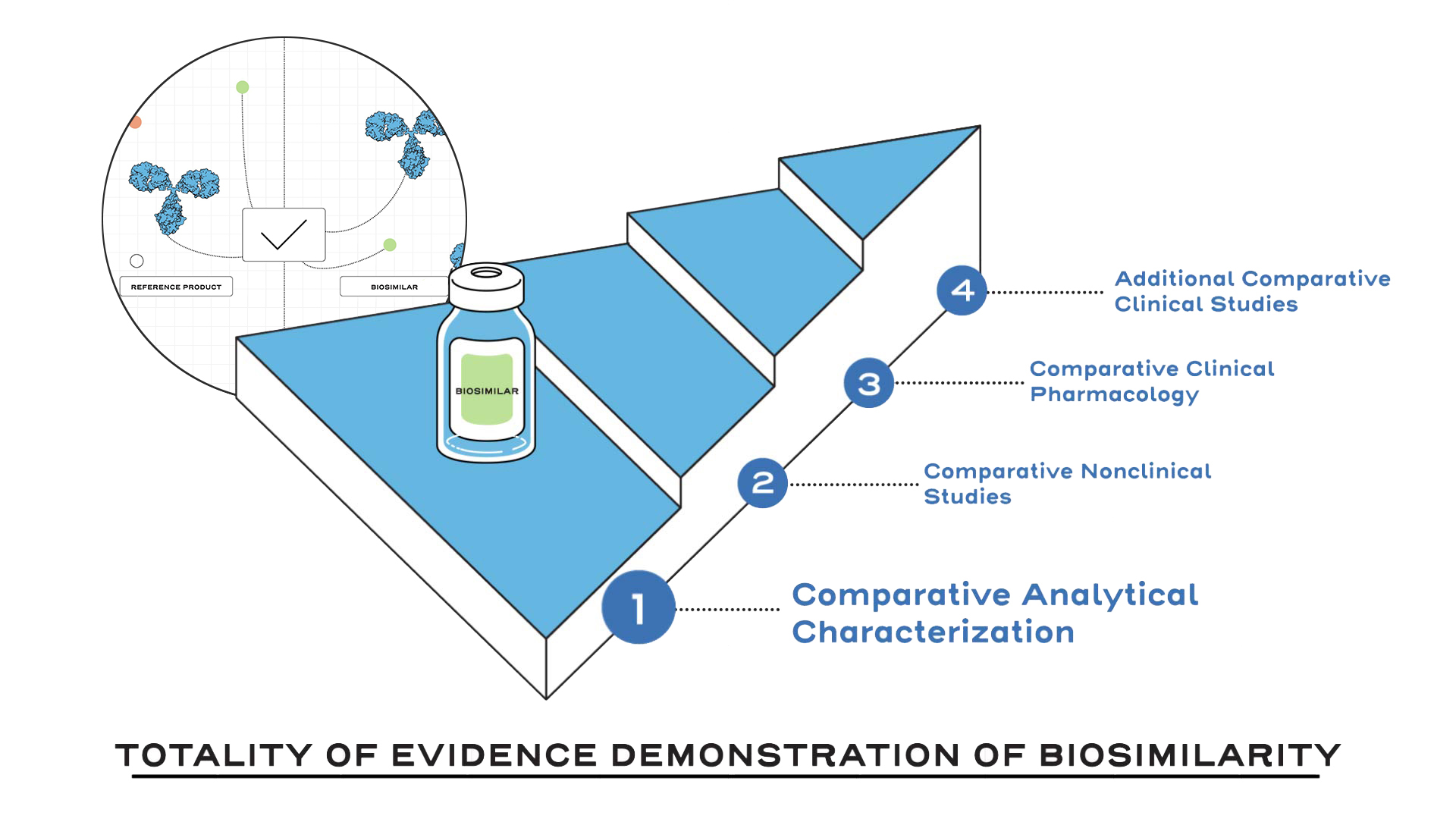
Subsequent comparative nonclinical studies may be employed to assess similarity in pharmacokinetics, pharmacodynamics, and toxicology profiles.2
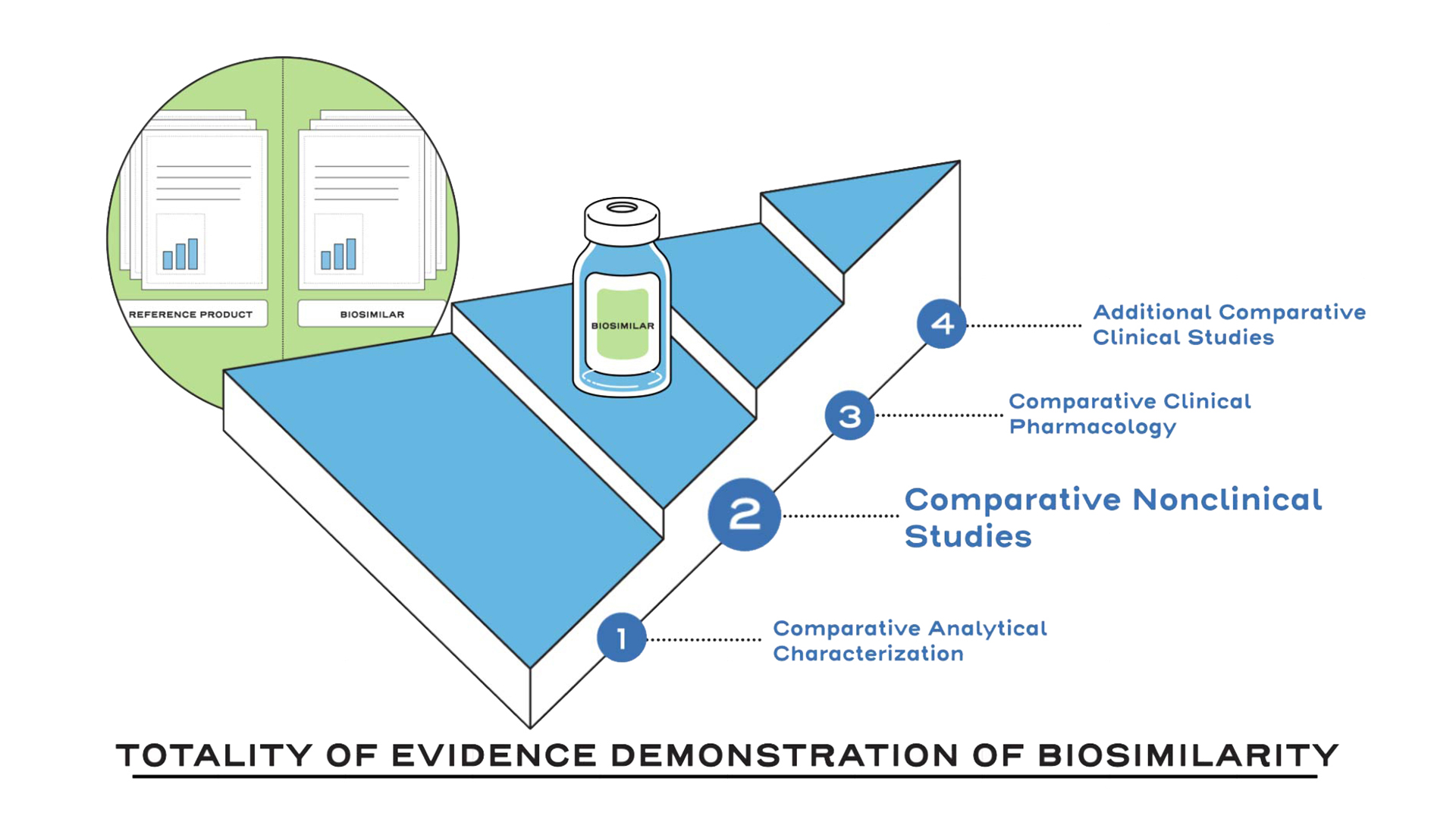
Clinical pharmacology studies are conducted to assess similarity in pharmacokinetics and pharmacodynamics. Similarity in immunogenicity and safety will also be assessed.2
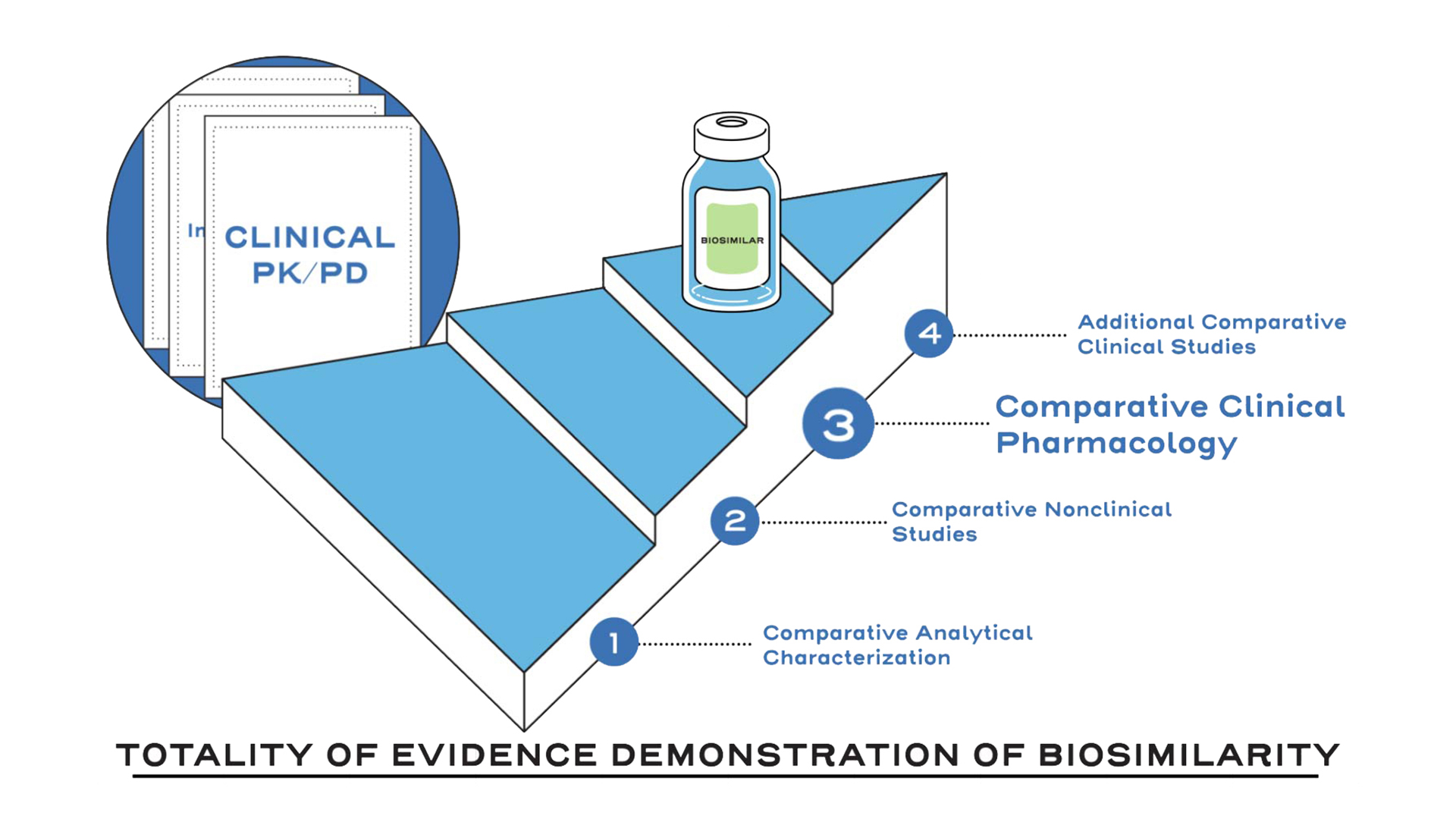
Additional comparative clinical studies are designed to evaluate whether there are clinically meaningful differences in immunogenicity, safety, or efficacy between the products.
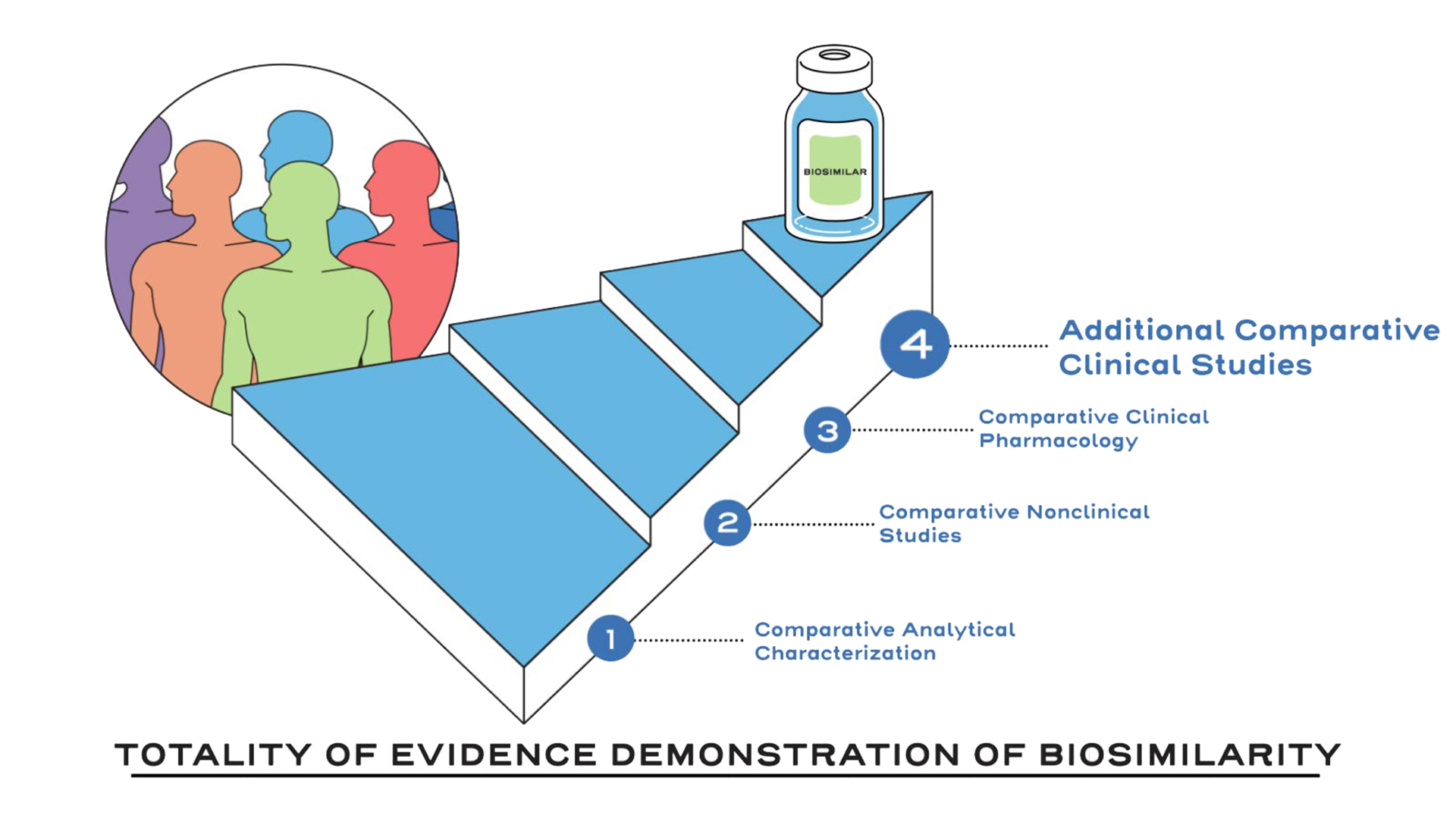
To summarize, approval of a biosimilar is based on the sum of data from analytical, nonclinical, and clinical studies, in an approach known as the “totality of the evidence.”2
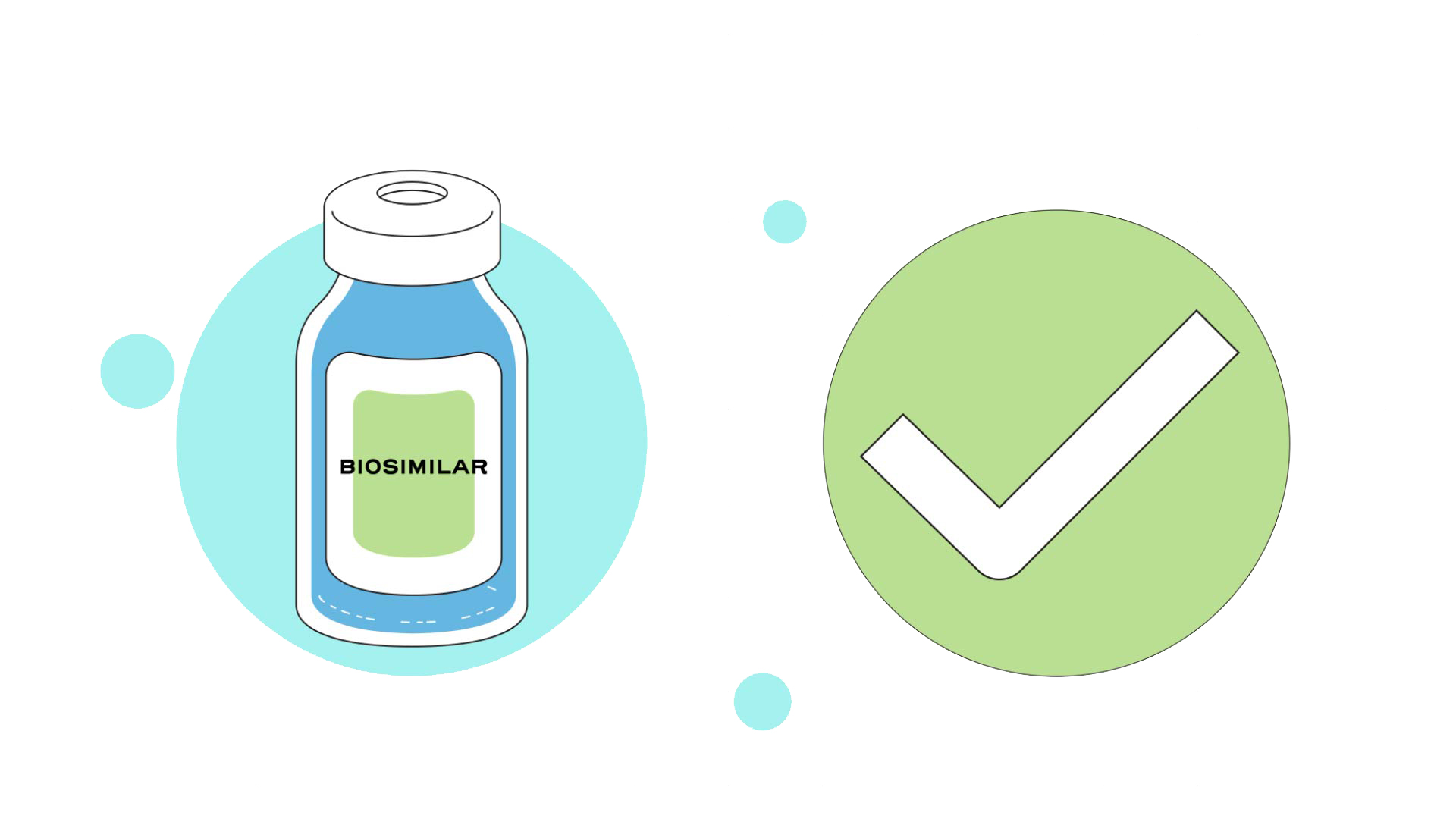
Like all biologics, biosimilars are highly complex, and thus, require scientifically rigorous regulatory approval standards to ensure the safety and effectiveness of biosimilars, just as they do for reference products.3
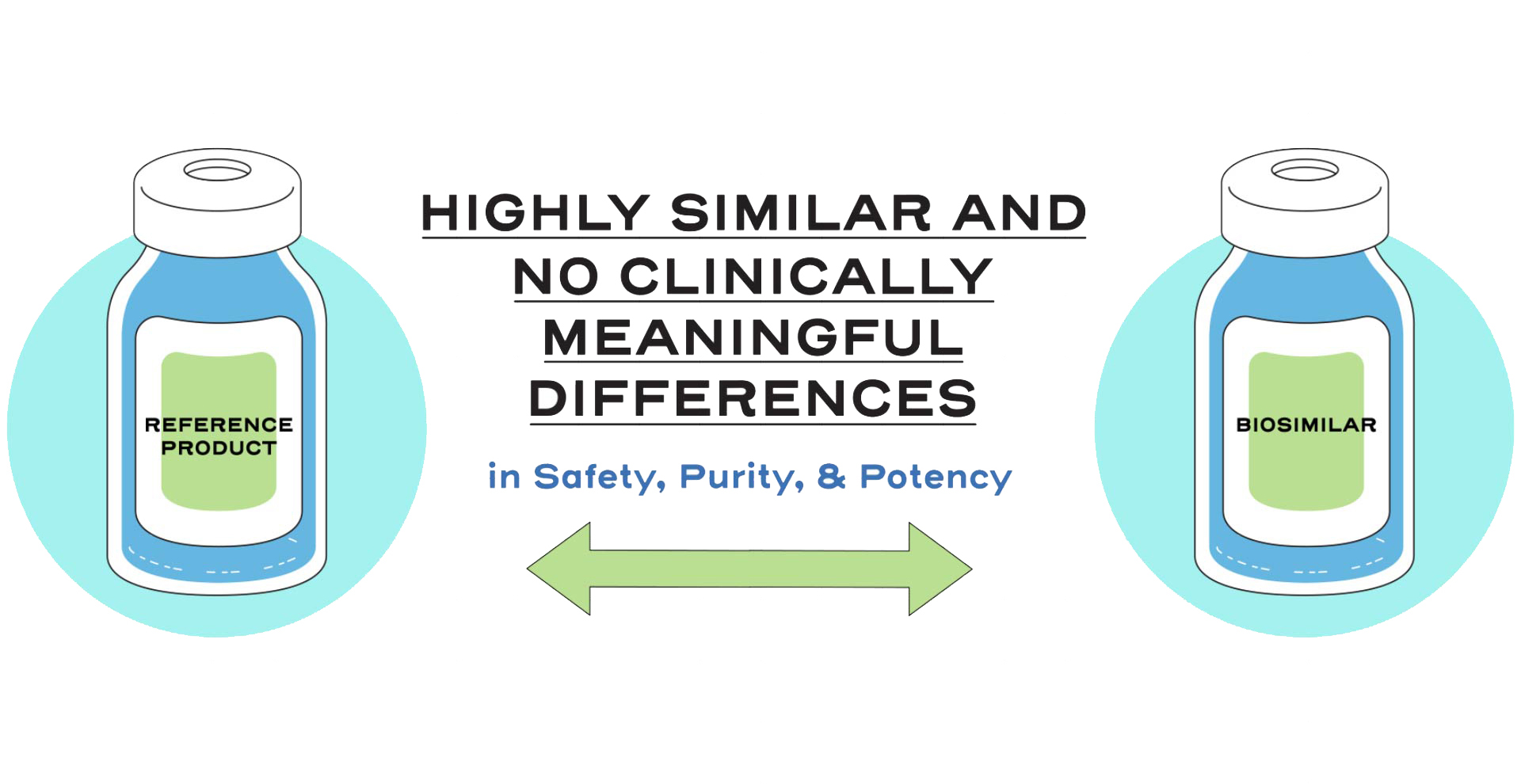
References:
- United States Food and Drug Administration. Biosimilar Development, Review, and Approval. 2017. Available at: https://www.fda.gov/drugs/biosimilars/biosimilar-development-review-and-approval. Accessed May 26, 2021.
- United States Food and Drug Administration. Scientific Considerations Demonstrating Biosimilarity to a Reference Product. 2015. Available at: https://www.fda.gov/media/82647/download. Accessed May 28, 2021.
- Sekhon, et al. Biosimilars. 2011;1:1-11.
Fast Facts About Efficacy of Biosimilars
Fast Facts About Efficacy of Biosimilars
Efficacy is the ability of a drug to produce the desired outcome in patients.1
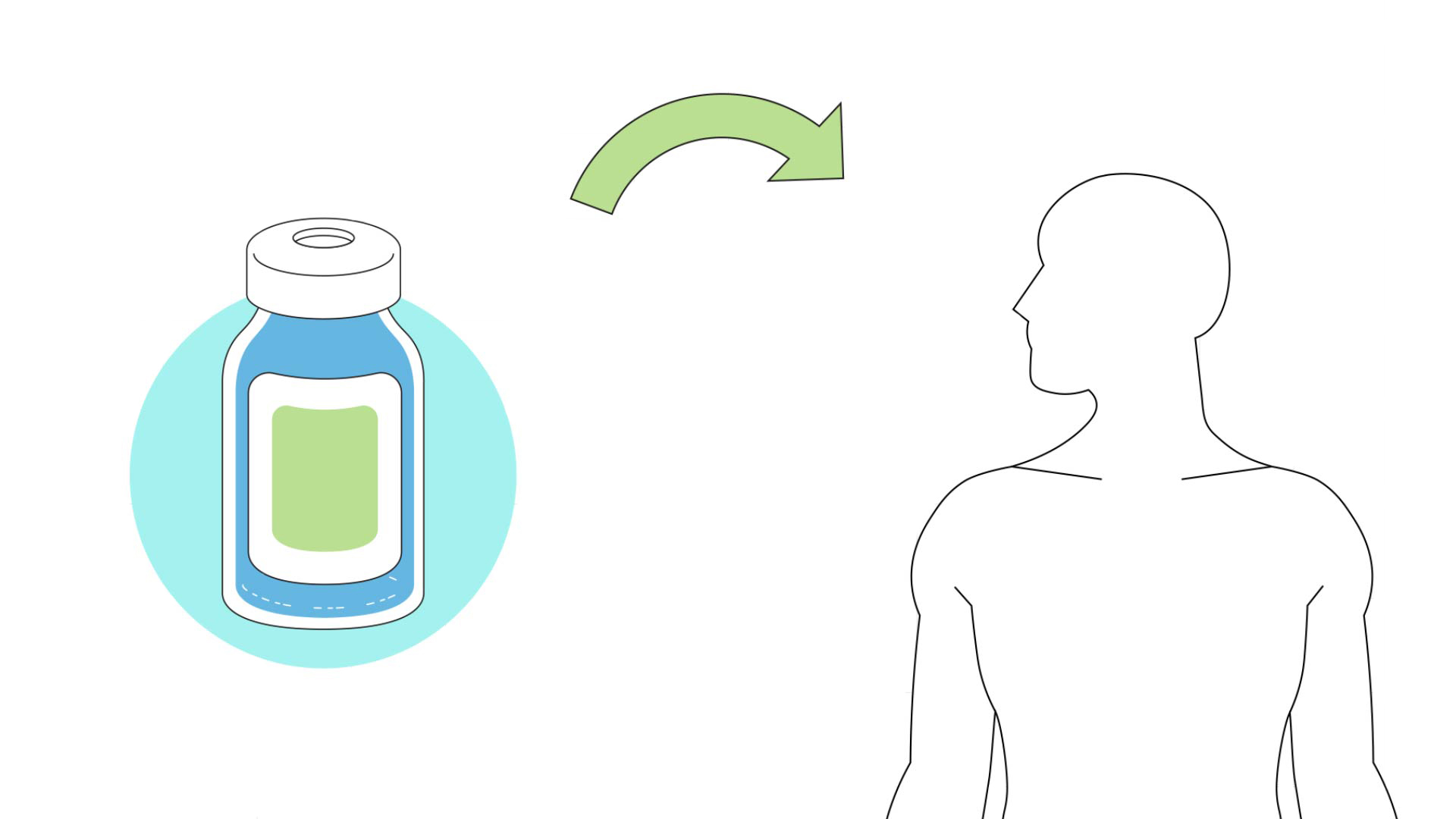
A biosimilar is expected to be as effective as the reference product and is evaluated as part of the demonstration of biosimilarity.2 A reference product is a previously licensed product used as the comparator for head-to-head comparability studies with the biosimilar in order to show no clinically meaningful differences in terms of safety, purity, and potency.3
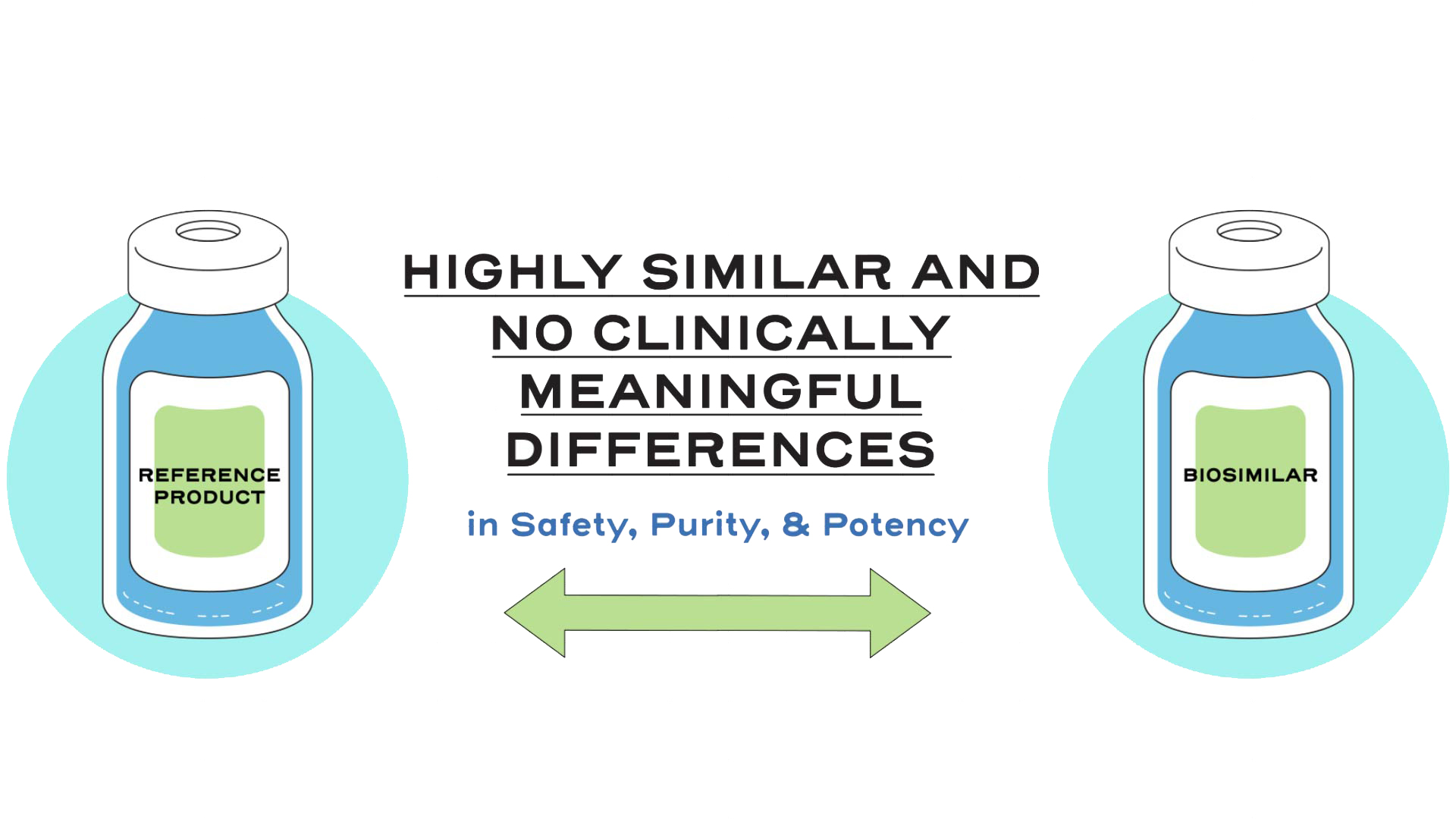
Biosimilarity is demonstrated through extensive comparative structural and functional characterization;
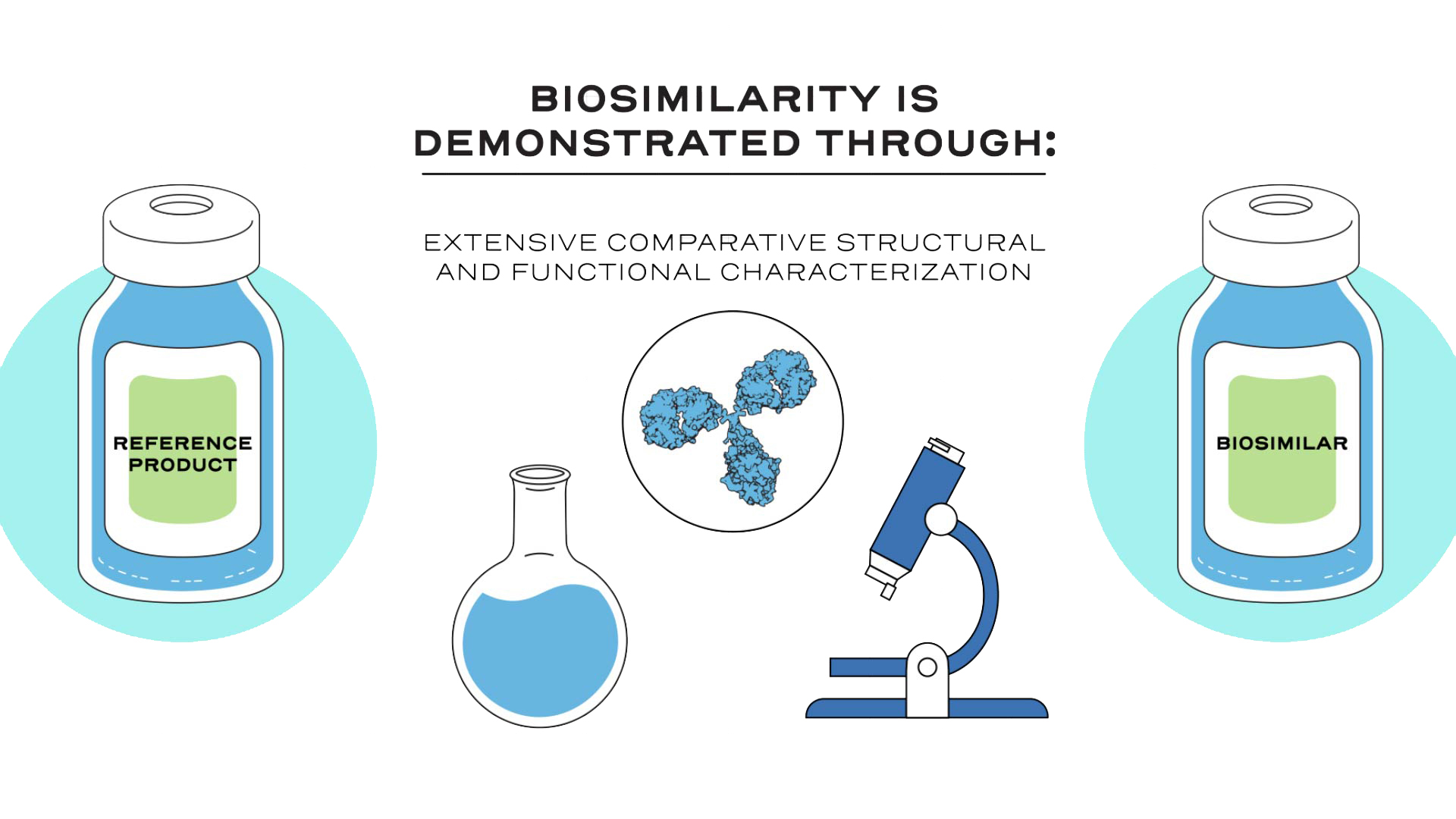
Biosimilarity is demonstrated through extensive comparative structural and functional characterization; comparative human PK/PD (clinical pharmacology) studies;
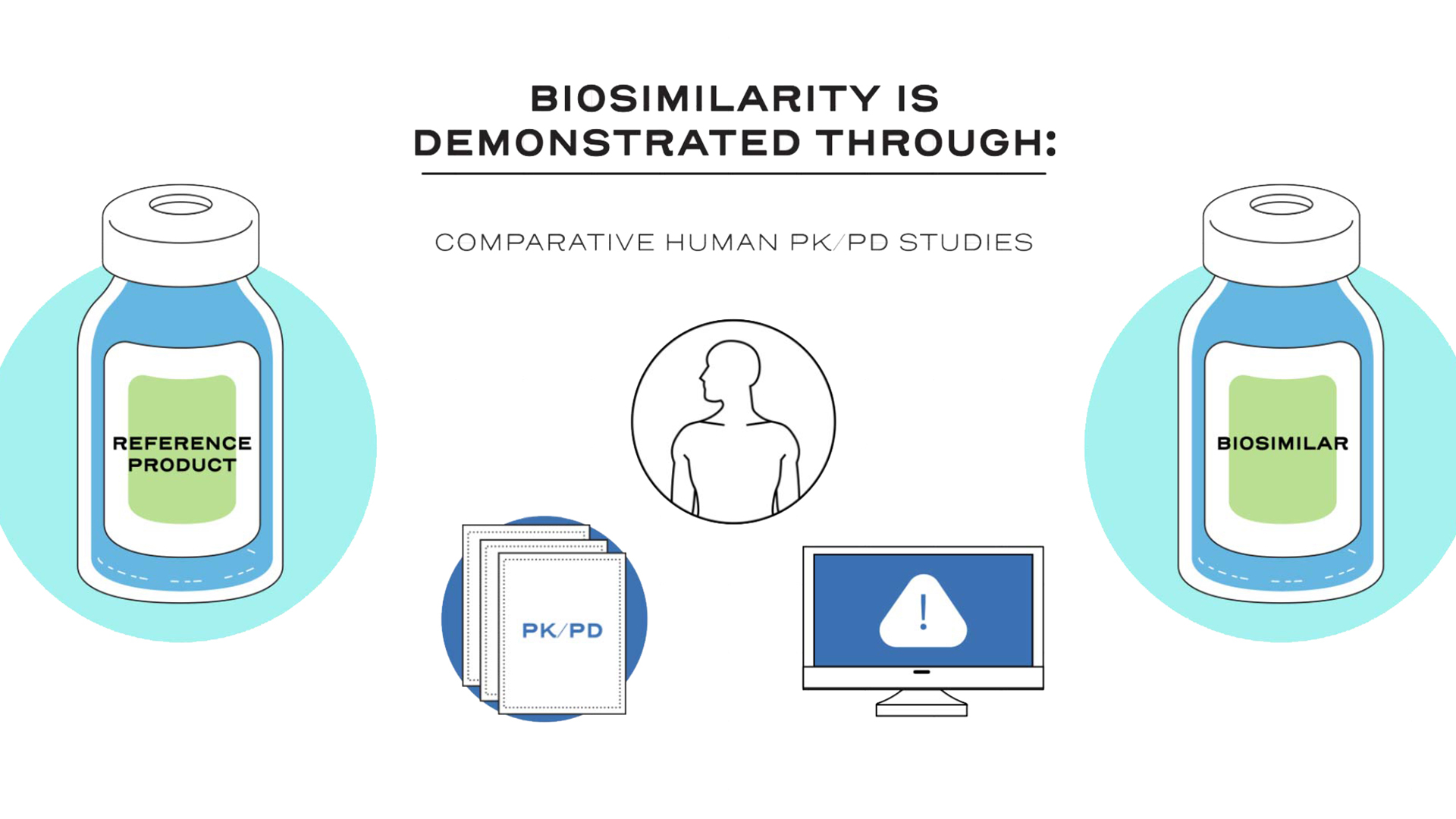
Biosimilarity is demonstrated through extensive comparative structural and functional characterization; comparative human PK/PD (clinical pharmacology) studies; and additional comparative clinical studies, including comparative safety, immunogenicity, and efficacy studies conducted in one or more reference product indications.2
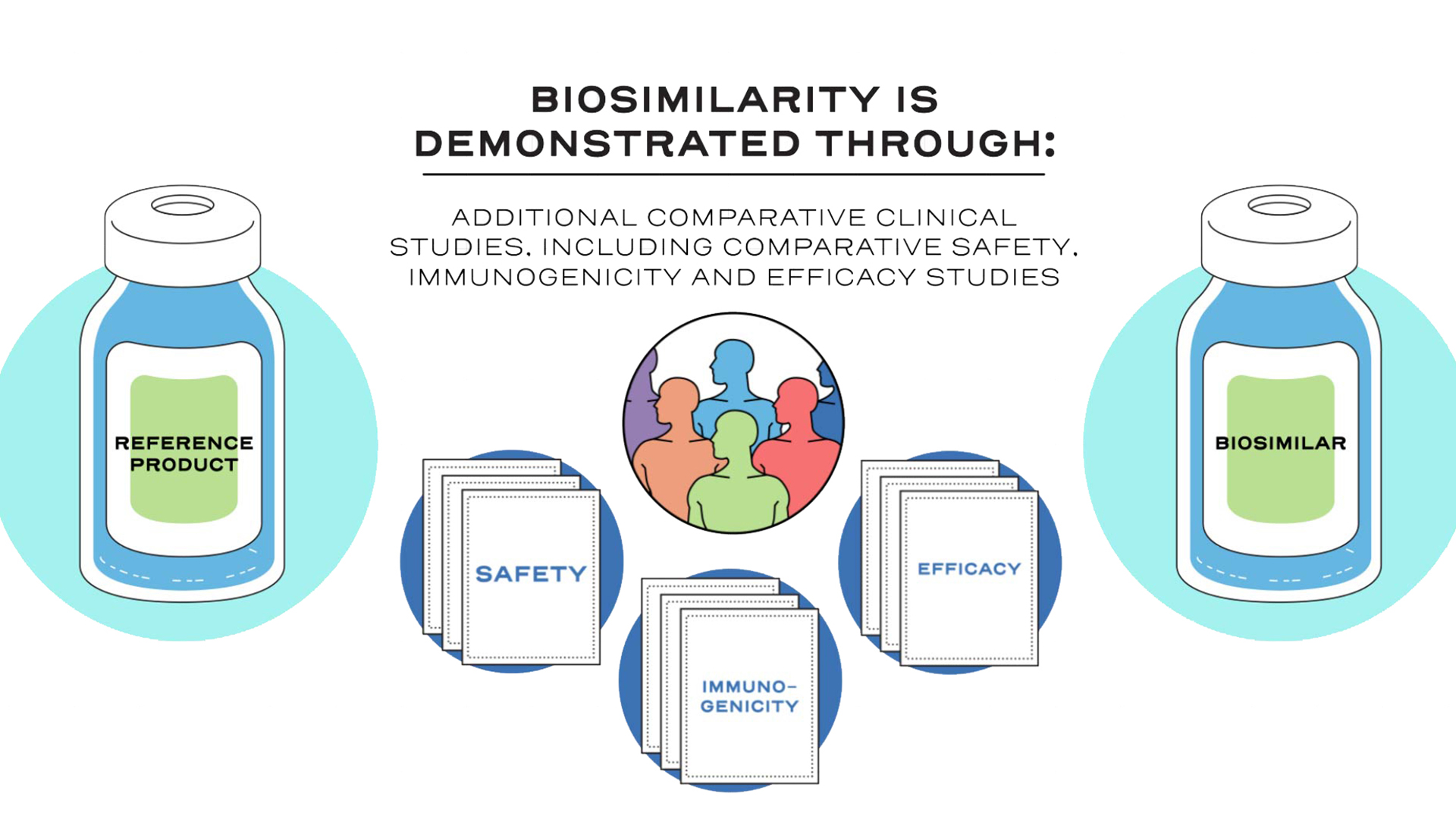
Based on a demonstration of biosimilarity, a manufacturer of a biosimilar product may rely, in part, on a regulatory authority’s previous findings of safety and efficacy for the reference product.4
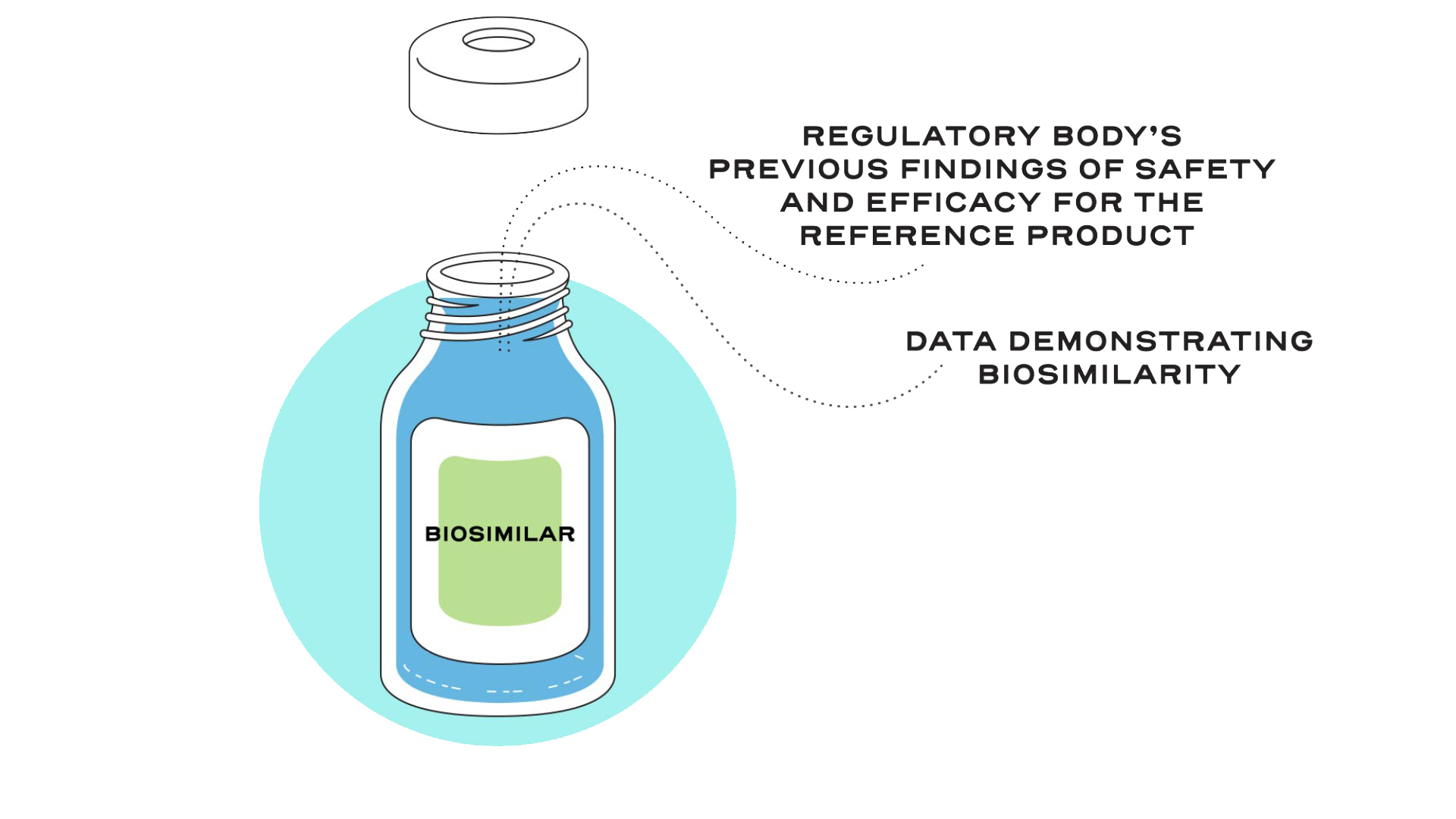
When a regulatory authority approves a biosimilar product, healthcare providers and patients can be confident in the safety and efficacy in all approved indications, just as they are for the reference product.4
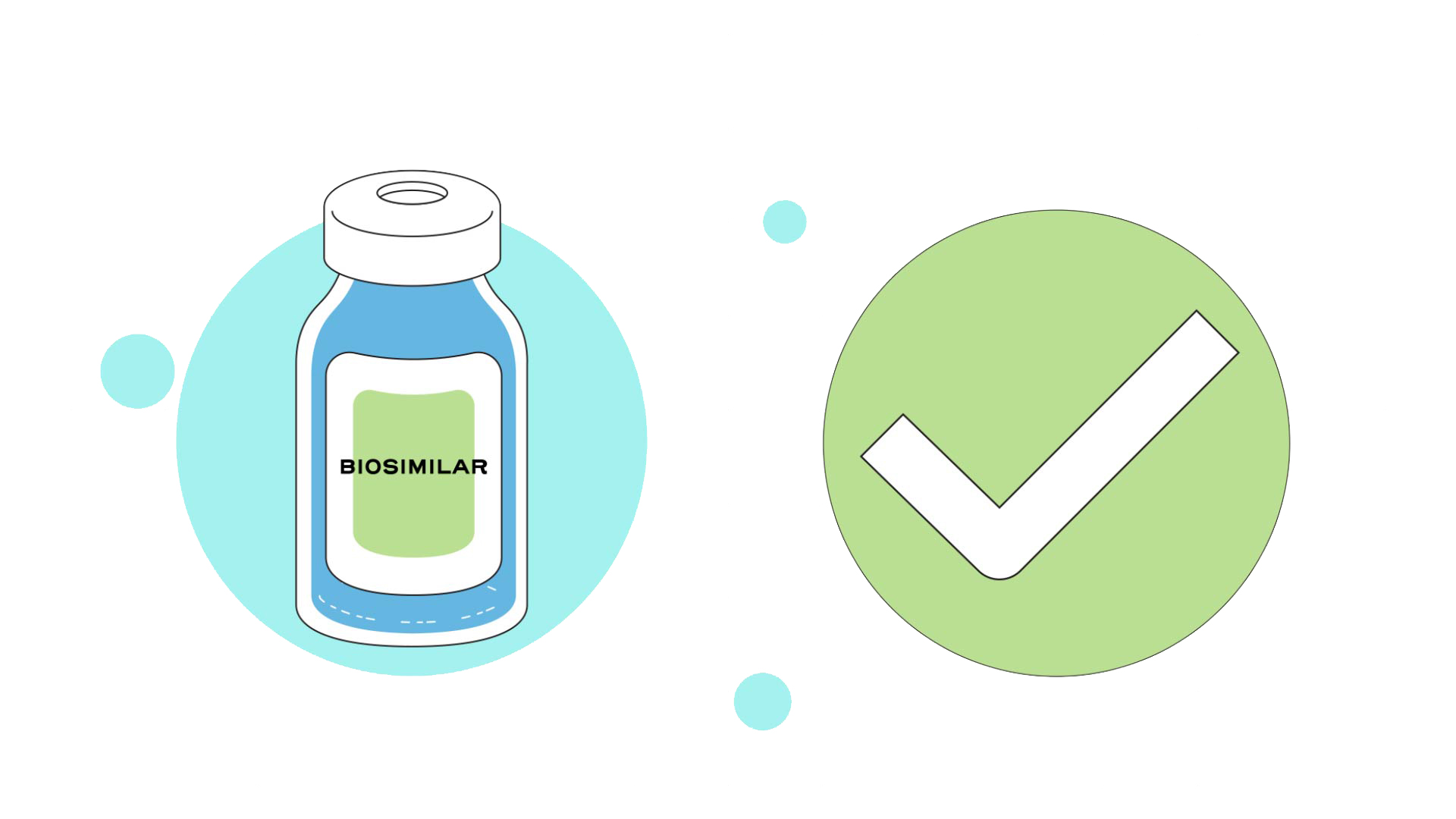
References:
- National Cancer Institute. NCI Dictionaries. 2021. Accessed May 28, 2021.
- United States Food and Drug Administration. Scientific Considerations Demonstrating Biosimilarity to a Reference Product. 2015. Available at: https://www.fda.gov/media/82647/download. Accessed May 28, 2021.
- Desanvicente-Celis, et al. Immunotherapy. 2012;4(12):1841-1857.
- United States Food and Drug Administration. Biosimilar Development, Review, and Approval. 2017. Available at: https://www.fda.gov/drugs/biosimilars/biosimilar-development-review-and-approval. Accessed May 26, 2021.
Fast Facts About the Quality of Biosimilars
Fast Facts About the Quality of Biosimilars
Safety is essential in every step of biosimilar manufacturing.
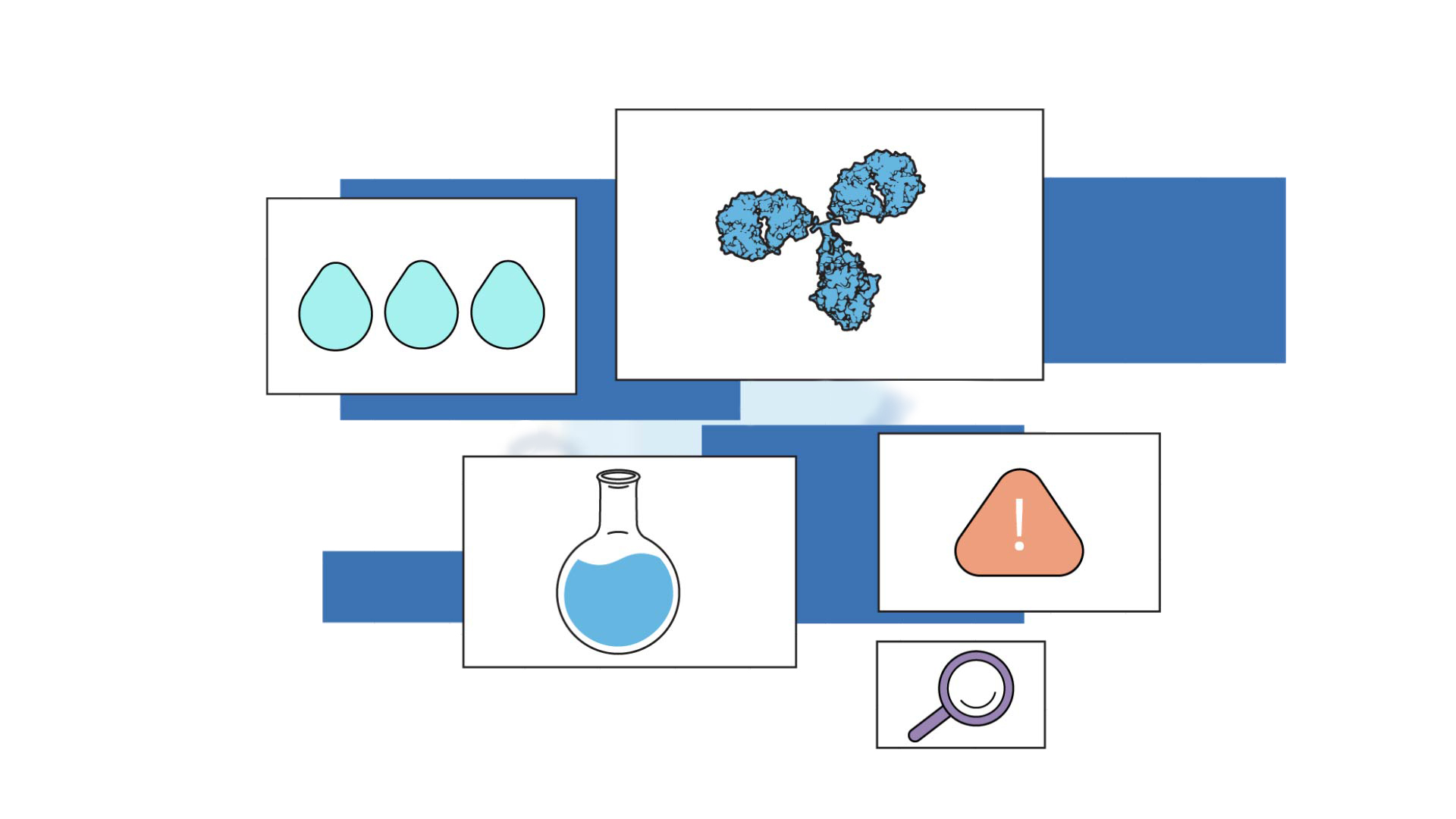
During biosimilar development, critical quality attributes (CQAs) of the reference product are identified, and the manufacturing process for the biosimilars candidate is analyzed and adapted to produce a product that is highly similar to the reference product.1
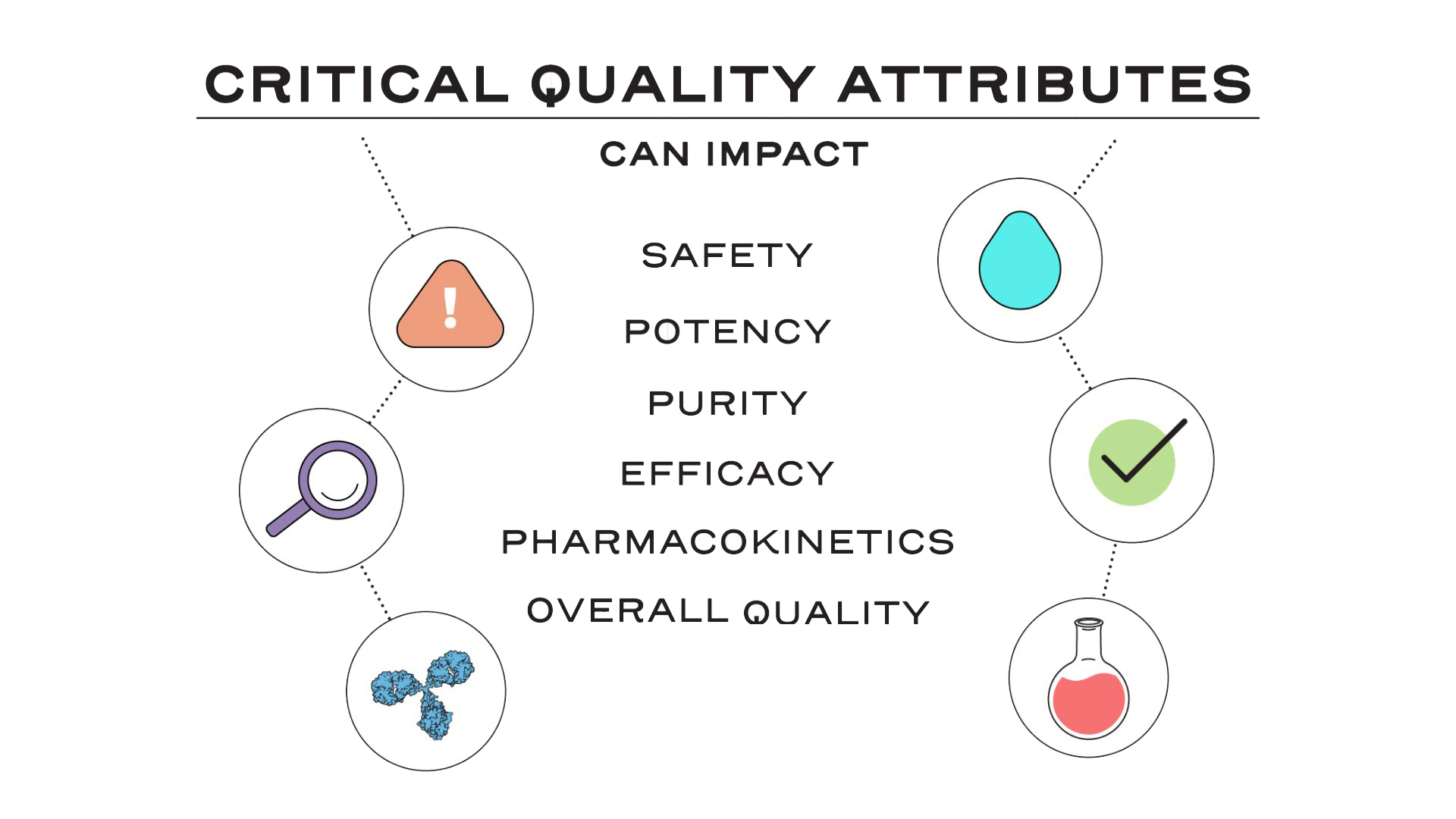
These CQAs could be a physical, chemical, or biological property and must be within an appropriate limit, range, or distribution to ensure the desired safety, efficacy, and pharmacokinetics of a drug.2
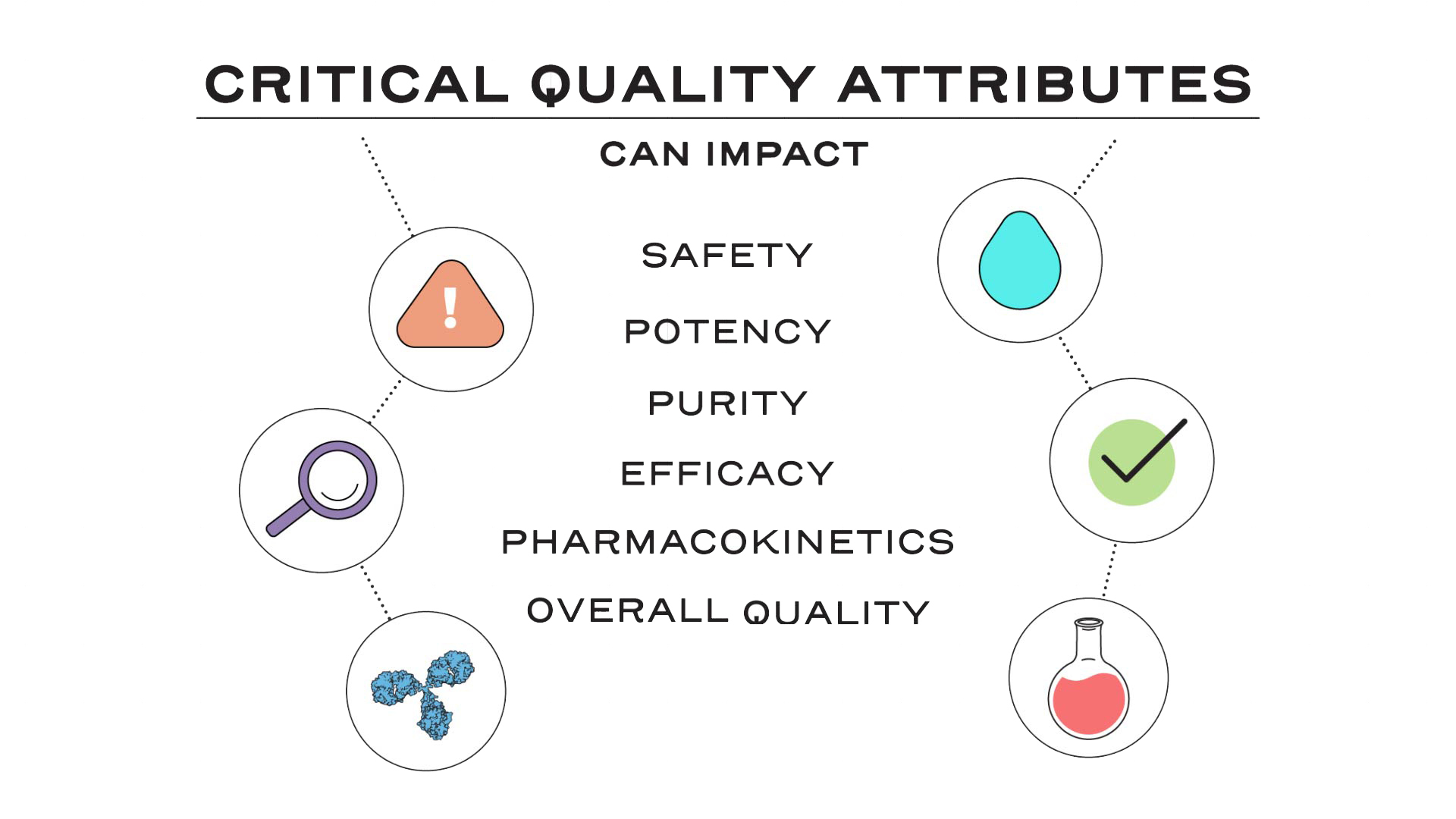
As part of the development process, comparative clinical studies are conducted to demonstrate that there are no clinically meaningful differences between the biosimilar candidate and the reference product in terms of safety, purity, and potency.3
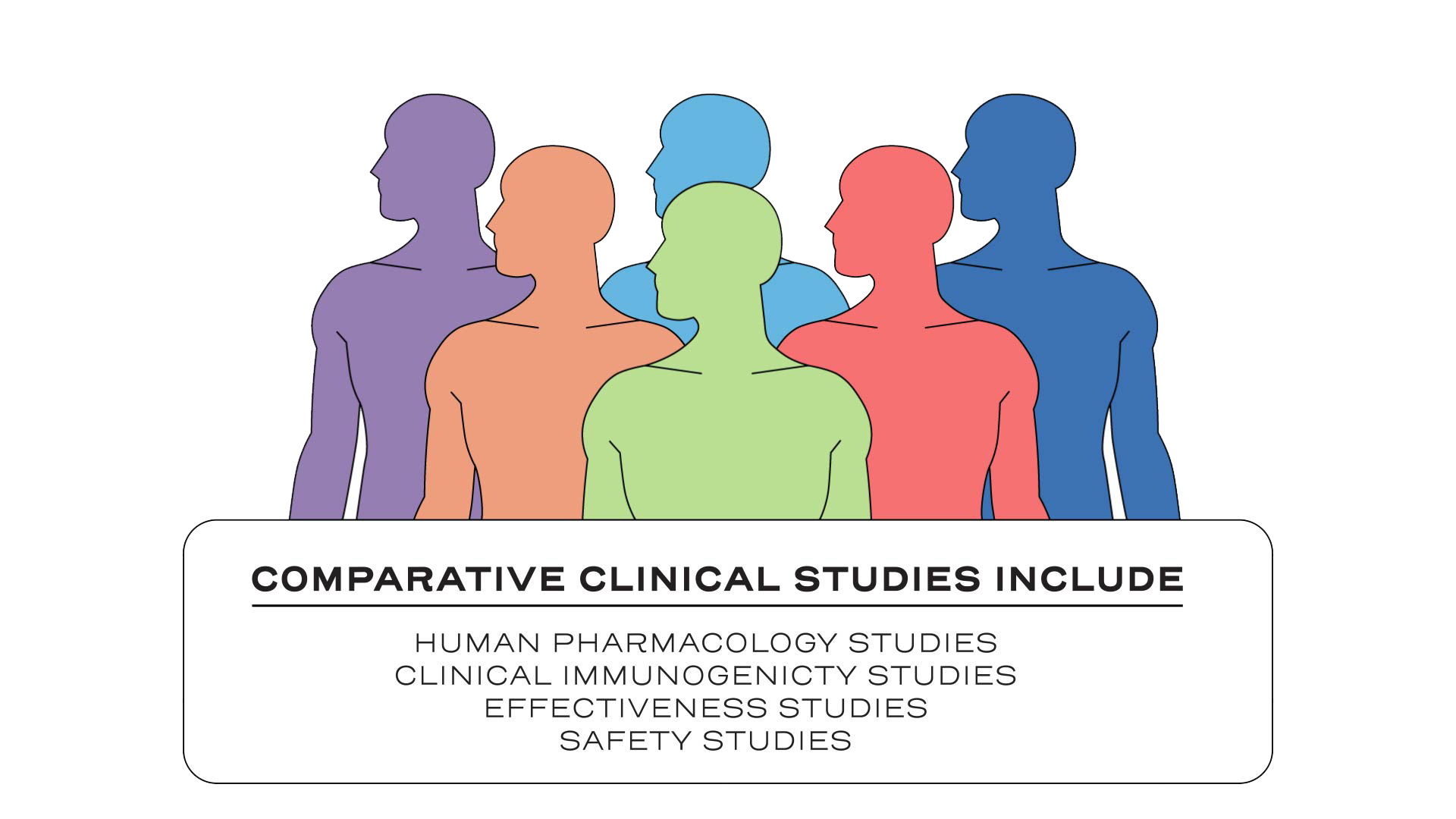
As with all biological products, testing is performed during the manufacturing process to assess product quality, and manufacturing controls ensure a consistent product with the expected quality, safety, and efficacy.4
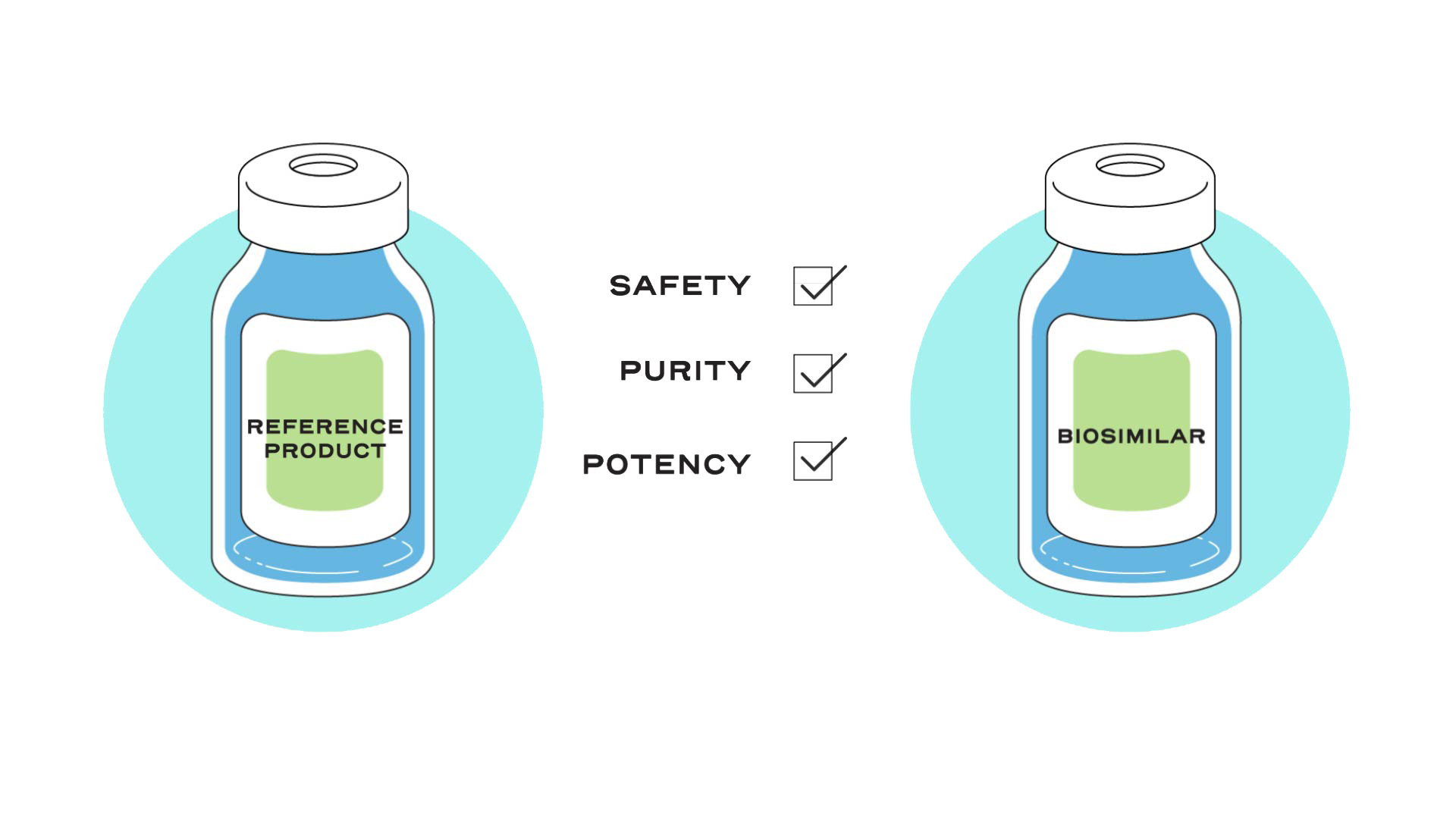
Finally, once the biosimilar has been approved, rigorous pharmacovigilance — to the same standards as the reference product — monitors safety in the post-marketing phase, which includes adverse event detection, reporting, and attribution to the correct product and manufacturer.3,5,6
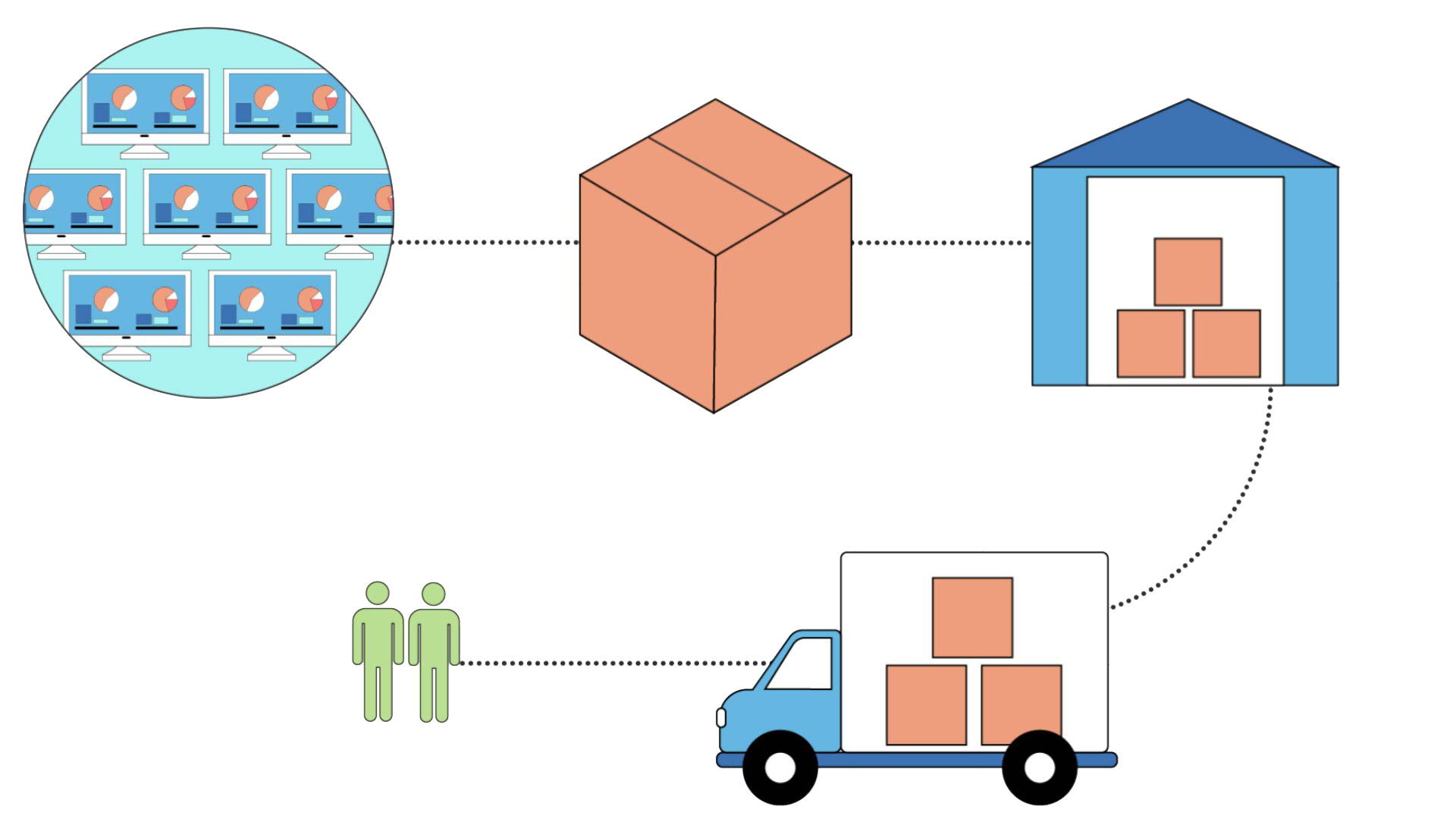
A rigorous manufacturing process, conducting appropriate comparative clinical testing, and robust post-marketing pharmacovigilance all help ensure the efficacy, safety, and quality of biosimilars.1,3,4
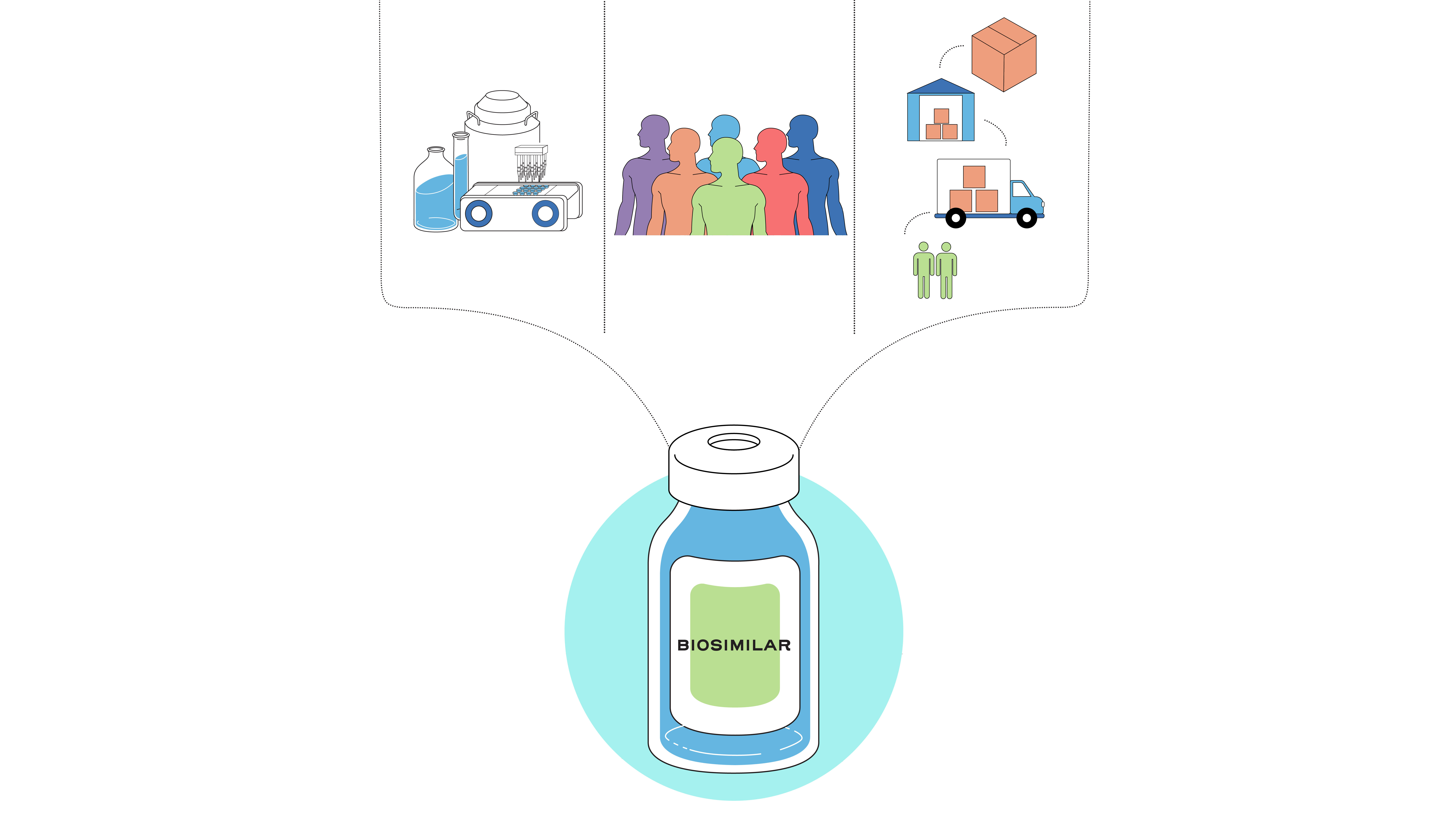
References:
- Vulto-Jasquez. Rheumatology. 2017;56:iv14-iv29.
- Markus, et al. BioDrugs. 2017;31:175-187.
- United States Food and Drug Administration. Scientific Considerations Demonstrating Biosimilarity to a Reference Product. 2015. Available at: https://www.fda.gov/media/82647/download. Accessed May 28, 2021.
- Desanvicente-Celis et al. Immunotherapy. 2012;4(12):1841-1857.
- Felix, et al. Nat Biotechnol. 2014;32:128-129.
- United States Food and Drug Administration. Nonproprietary naming of biological products. 2017. Available at: https://www.fda.gov/media/93218/download. Accessed May 28, 2021.


